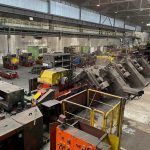
Optimization of start times and product sequences in a multi-line hot rolling mill
In a project together with voestalpine Böhler Edelstahl GmbH & Co KG, the start times and sequence of products in multi-line profile rolling plant are optimized. Based on mathematical models for processing times of all relevant plant sections, an algorithm that computes optimal product start times is developed. The algorithm considers the stochastic nature of the actual processing times. Moreover, a combinatoric optimization problem for the product selection and sequence is formulated and solved. Read more →

Optimal TCP and Robot Base Placement for Complex Continuous Paths
In this work, the optimal tool geometry for a predefined end-effector path is derived for an industrial robot. Read more →

Application of Curved Tapes on 3D Objects
This project presents a flexible approach for impedance-controlled wrinkle-free application of (curved) pre-cut adhesive tapes on freeform 3D surfaces. Read more →
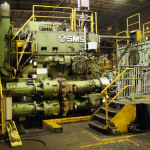
Mathematical modelling, optimization and quality monitoring for side-trimming of heavy steel plates
Side-trimming is an essential processing step in the steel industry. In this research project, optimization and estimation strategies are developed to minimize common quality defects of the trimmed edges and to realize systematic quality monitoring of these edges. Read more →

Hol-I-Wood PR
The correction of natural wood defects, such as resin galls or loose dead knots, interrupts the automatized production flow in timber industry. The human workforce is key for detection and classification of wood defects as well as for their correction. The project Hol-I-Wood PR aims at automatizing this monotone and laborious work. The resulting innovative "wood patching"-plant is going to be integrated into the shutter board production line of our partner company. Read more →
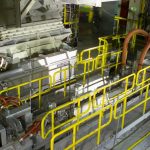
Modeling, observer design, and control of continuous strip processing lines
In continuous strip processing line, steel strips are thermally and mechanically processed as well as surface coated (e.g. galvanized). In this project, observer and control concepts for continuous galvanizing lines are developed. Additionally, controllers for laboratory facilities to develop new process technologies (e.g. laboratory furnaces) are designed. Read more →
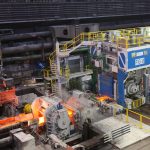
Modeling, observer and control design of a tandem hot strip rolling mill
Rough-rolled steel plates are rolled in a tandem hot rolling mill to strip with a final thickness. This thickness should accurately and uniformly correspond with the desired value. To satisfy this requirements and to ensure a stable strip travel, model-based control concepts are developed in this project. Read more →
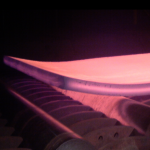
Flatness control in heavy plate rolling
In heavy plate rolling, the heated plates are plastically deformed between two work rolls. Here, asymmetries in the roll gap may cause up- or downward bending of the ends of the plates. This so-called ski effect affects the flatness of the plates and may entail problems in subsequent processing steps. A model-based control concept and an improved speed controller for the roll drives can avoid such ski-ends and thus increase the quality of the plates. Read more →
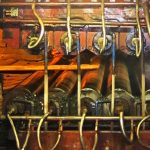
Modeling and control of hot levelers
Levelers are used in the production of steel plates in rollings mills to improve the flatness of the products. After rolling and cooling, a leveling machine reduces remaining flatness errors and residual stresses in the plates. This happens by alternate plastic bending of the plate material between the work rolls of the leveler. Read more →
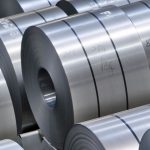
Modeling, observer design, control, and optimization of strip annealing furnaces
In the steel industry, continuous strip annealing furnaces are used for the heat treatment of strip products. To meet the high demands on the quality of the final product, the strip has to be heated to a predefined target temperature while it moves through the furnace. This is a challenging control task because an annealing furnace is a complex, nonlinear, thermodynamical multi-input-multi-output system and many process variables cannot be measured. Read more →